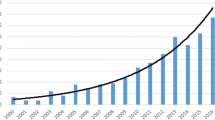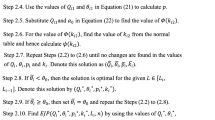Abstract
Fast-changing market demand, short product life cycle, and unpredictable events have been enforcing companies in a supply chain to respond to customers’ needs as quickly as possible. While many firms are still seeking a better inventory management within the general business environment, this paper develops an ordering decision support model within a business environment with more unpredictable events. To reduce the uncertainty, a retailer adopts a double sourcing policy with one major supplier and one emergent supplier. Through a two-period dynamic programming model formulation and the simulations based on design of experiments, we analyzed the effects of factors such as penalty cost, backup ratio, purchasing cost ratio, and demand correlation coefficient on retailer’s ordering policy and expected profit. Detailed sensitivity analysis is further conducted based on combinations of penalty cost and backup ratio. Results show that the use of an emergent supplier help increase the retailer’s expected profits. It not only increases the retailer’s upstream sourcing flexibility, but also increases the retailer’s service level with a lower inventory level. As penalty cost or backup ratio increases, the contribution of emergent supplier increases.
Similar content being viewed by others
References
Lee, H.: The triple-A supply chain. Harvard Bus. Rev., pp. 102–112 (2004)
Wu J.: Quantity flexibility contracts under Bayesian updating. Comput. Oper. Res. 32, 1267–1288 (2005)
Tsay A., Nahmias S., Agrawal N.: Modeling supply chain contracts: a review. Quantitative Models for Supply Chain Management, pp. 299–336. Kluwer, Boston (1998)
Barnes-Schuster, D., Bassok, Y., Anupindi, R.: Supply contracts with options: Flexibility, information, coordination, Working paper (1998)
Migdalas A., Bourakis G., Pardalos P.M.: Supply Chain and Finance. World Scientific Publishing, Singapore (2004)
Pardalos P.M., Tsitsiringos V.: Financial Engineering, E-commerce and Supply Chain. Kluwer, The Netherlands (2002)
Bassok Y., Anupindi R.: Analysis of supply contracts with total minimum commitment. IIE Trans. 29, 373–381 (1997)
Eppen G., Iyer A.: Backup agreements in fashion buying-the value of upstream flexibility. Manage. Sci. 43, 1469–1484 (1997)
Sethi S., Yan H., Zhang H.: Quantity flexibility contract: optimal decisions with information updates. Decis. Sci. 35, 691–712 (2004)
Xu N.: Multi-period dynamic supply contracts with cancellation. Comput. Oper. Res. 32, 3129–3142 (2004)
Chen F.Y., Krass D.: Analysis of supply contracts with minimum total order quantity commitments and non-stationary demands. Eur. J. Oper. Res. 131, 309–323 (2001)
Anupindi R., Bassok Y.: Approximations for multiproduct contracts with stochastic demands and business volume discounts: single supplier case. IIE Trans. 30, 723–734 (1998)
Smith S., Agrawal N., Tsay A.: SAM: a decision support system for retail supply chain planning for private-label merchandise with multiple vendors. Supply Chain Management: Models, Applications, and Research Directions, pp. 163–198. Kluwer, Boston (2002)
Billington C., Johnson B.: Creating and leveraging options in the high technology supply chain. The Practice of Supply Chain Management: Where Theory and Application Converge, pp. 157–174. Springer, New York (2003)
Chiang C., Gutierrez G.: A periodic review inventory system with supply models. Eur. J. Oper. Res. 94, 527–547 (1996)
Geunes J., Pardalos P., Romeijn E.: Supply Chain Optimization: Models, Applications and Algorithms. Kluwer, The Netherlands (2002)
Geunes J., Pardalos P.M.: Supply Chain Optimization. Springer, USA (2005)
Geunes J., Alcali E., Pardalos P.M., Romeijn H.E., Shen Z.J.: Applications of Supply Chain Management and E-commerce Research in Industry. Springer, USA (2005)
Author information
Authors and Affiliations
Corresponding author
Rights and permissions
About this article
Cite this article
Chiang, D.M., Guo, RS. & Pai, FY. Retailer’s optimal sourcing strategy by using one major supplier and one emergent supplier. Optim Lett 5, 319–331 (2011). https://doi.org/10.1007/s11590-010-0212-z
Received:
Accepted:
Published:
Issue Date:
DOI: https://doi.org/10.1007/s11590-010-0212-z




